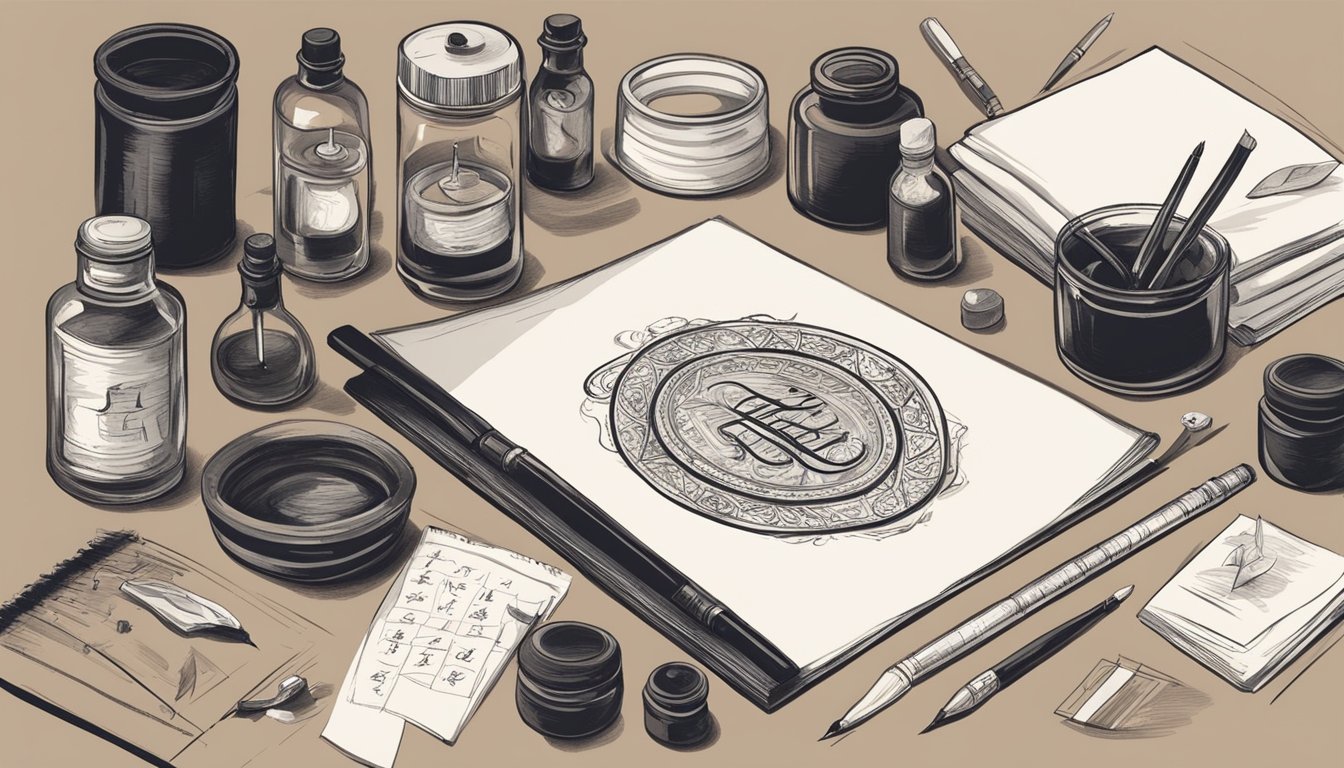Calligraphy is a beautiful art form that allows you to express creativity through lettering.
Whether you’re just starting or looking to refine your skills, improving your calligraphy can be a rewarding journey. In this article, you will discover five easy ways to elevate your calligraphy skills and achieve stunning results.

Mastering calligraphy takes practice, patience, and the right techniques.
With the right guidance, you can transform your handwriting into a captivating art style that impresses others.
From the tools you use to your writing posture, small adjustments can lead to significant improvements in your work.
1) Get Comfortable Pens

Choosing the right pen is vital to your calligraphy journey.
If you’re using a pen that feels awkward or uncomfortable, it can affect your practice and your outcomes.
Start with pens that fit well in your hand.
Look for ones that have a comfortable grip and a weight that feels right to you.
The best pen is one that allows you to write for long periods without cramping.
Experiment with different styles of pens.
Some prefer flexible nibs, while others enjoy firmer tips.
Try both to see what feels best and gives you the control you need.
Don’t forget about ink.
Make sure it’s compatible with your pen and flows smoothly.
If the ink skips or blobs, it can disrupt your rhythm and make writing frustrating.
Lastly, keep your pens clean.
A clean nib ensures a consistent flow of ink and can significantly enhance your writing experience.
Regular maintenance goes a long way in keeping your tools in top shape.
2) Try the ‘Oval and Line’ Exercise
The ‘Oval and Line’ exercise is a fundamental tool for improving your calligraphy skills.
It focuses on mastering basic shapes that form the foundation of beautiful lettering.
Start with a thin upstroke to create the oval.
Begin from the right side, around 2-3 o’clock, and move counterclockwise.
Then, transition into a thick downstroke, curving it gently to maintain flow.
For the line part, after completing the oval, switch back to a thin upstroke.
This transition helps connect the shapes smoothly.
Practicing this helps you build control and consistency in your strokes.
Set aside a few minutes each day for this exercise.
Remember, short, focused practice sessions are often more effective than long, infrequent ones.
You’ll notice improvements in your basic strokes over time.
Incorporate this exercise into your regular practice routine, and watch your calligraphy skills grow.
It’s a simple yet effective way to enhance your technique and confidence.
3) Mix Up Your Inks

Experimenting with different ink mixtures can add a fresh twist to your calligraphy.
You might consider using paints designed for calligraphy.
These can create lovely, sparkly effects.
Dilute your paints at a 4:1 ratio of ink to water for the best results.
This helps achieve a smooth flow and keeps your lettering looking crisp.
Don’t be afraid to combine colors, either.
Mixing different shades can help bring depth to your work.
Just remember to test your blends on scrap paper first to see how they look when dry.
If you encounter any common ink problems, like skipping, revisit your ink’s consistency.
Thick inks can give you trouble, so tweaking your mix can solve this.
Trying out various inks can invigorate your practice sessions and lead to unique styles.
So grab your supplies and start experimenting!
4) Watch a Yoke and Zuych Calligraphy Video
Watching a Yoke and Zuych calligraphy video can be a fun way to enhance your skills.
These videos typically offer clear demonstrations of techniques you might be struggling with.
You can find a variety of tutorials that focus on different styles and strokes.
This variety allows you to pick up new tips and tricks that can be immediately applied to your own work.
As you watch, try to follow along with your pen.
Mimicking the strokes in real-time helps reinforce what you learn.
This active practice keeps you engaged and more likely to remember the techniques.
Don’t hesitate to pause and rewind.
Taking your time to understand each movement can make a significant difference in your progress.
YouTube is full of resources, so explore different creators to find the ones whose style resonates with you.
Each artist has unique insights that can inspire and improve your calligraphy journey.
5) Attend a Local Workshop
Joining a local calligraphy workshop can be a game changer for your skills.
You’ll get hands-on experience and immediate feedback from an instructor who knows the craft.
Working alongside others can also boost your motivation.
Sharing tips, techniques, and even struggles with fellow learners brings a sense of community.
You can find a variety of workshops that focus on different styles, from traditional to modern calligraphy.
Choose one that matches your interests to make your learning experience enjoyable.
These workshops often provide all the necessary materials, so you don’t have to worry about buying tools right away.
Just show up and start practicing!
Plus, engaging in a class setting is a great way to stay accountable.
You’ll be more likely to practice regularly after attending a session.
Understanding Calligraphy Styles
Calligraphy offers a rich variety of styles and tools that you can explore.
Familiarizing yourself with different scripts and selecting the right tools can significantly enhance your practice.
Different Script Types
There are several main script types you might want to consider:
- Copperplate: Known for its elegant swirls and loops, this style is perfect for formal invitations.
- Blackletter: Characterized by its dense, bold letters, it includes variations like Textura and Fraktur, great for dramatic text.
- Italic: This script is more fluid and slanted, making it suitable for both casual writing and formal notes.
- Uncial: With rounded letters, this script is often used for decorative purposes and has an ancient feel.
- Modern Calligraphy: Looser and more expressive, this style allows for personalization and creative flourishes.
Experimenting with these styles will help you discover which resonates with your personal aesthetic.
Choosing the Right Tools
Selecting the right tools can make a big difference in your calligraphy journey.
Here are some essentials to consider:
- Pens: Fountain pens, dip pens, and brush pens all have unique qualities. Brush pens are especially popular for modern styles.
- Inks: Look for water-based or pigment-based inks for different effects. Some inks can create vibrant colors or subtle shades.
- Paper: Smooth, thick paper is best to prevent ink bleed-through. Specialty calligraphy paper often has light guidelines for help with alignment.
- Guidelines: Using grid paper or printed templates can help you maintain consistent size and slant in your lettering.
Choosing the right combination of these tools can enhance your overall calligraphy experience.
Practicing with Purpose

To truly enhance your calligraphy skills, practicing with intention is key.
By setting clear goals and creating structured practice schedules, you can make the most of your time and efforts.
Setting Clear Goals
Starting with specific goals gives your practice sessions direction.
Think about what you want to achieve.
For instance, aim to master a particular style like italic or cursive, or focus on improving your letter spacing.
Examples of clear goals:
- Improve speed for writing quotes.
- Perfect letter shapes for address labels.
- Experiment with different nibs or inks.
Write these goals down and keep them visible during your sessions.
This will help keep you motivated and focused as you progress.
Creating Practice Schedules
In calligraphy, you need to be consistent.
You can stay on track by establishing a regular practice schedule.
Designate specific days and times for practice.
Commit to at least 3-4 sessions per week.
Tips for your schedule:
- Set aside 30 minutes to an hour for each session.
- Mix up drills and creative projects to keep it fresh.
- Use a timer to maintain focus during your practice.
A written schedule can reinforce your commitment and provide accountability.
You can try using a calendar app.
It can remind you of your practice times and help you adapt your goals as you improve.


